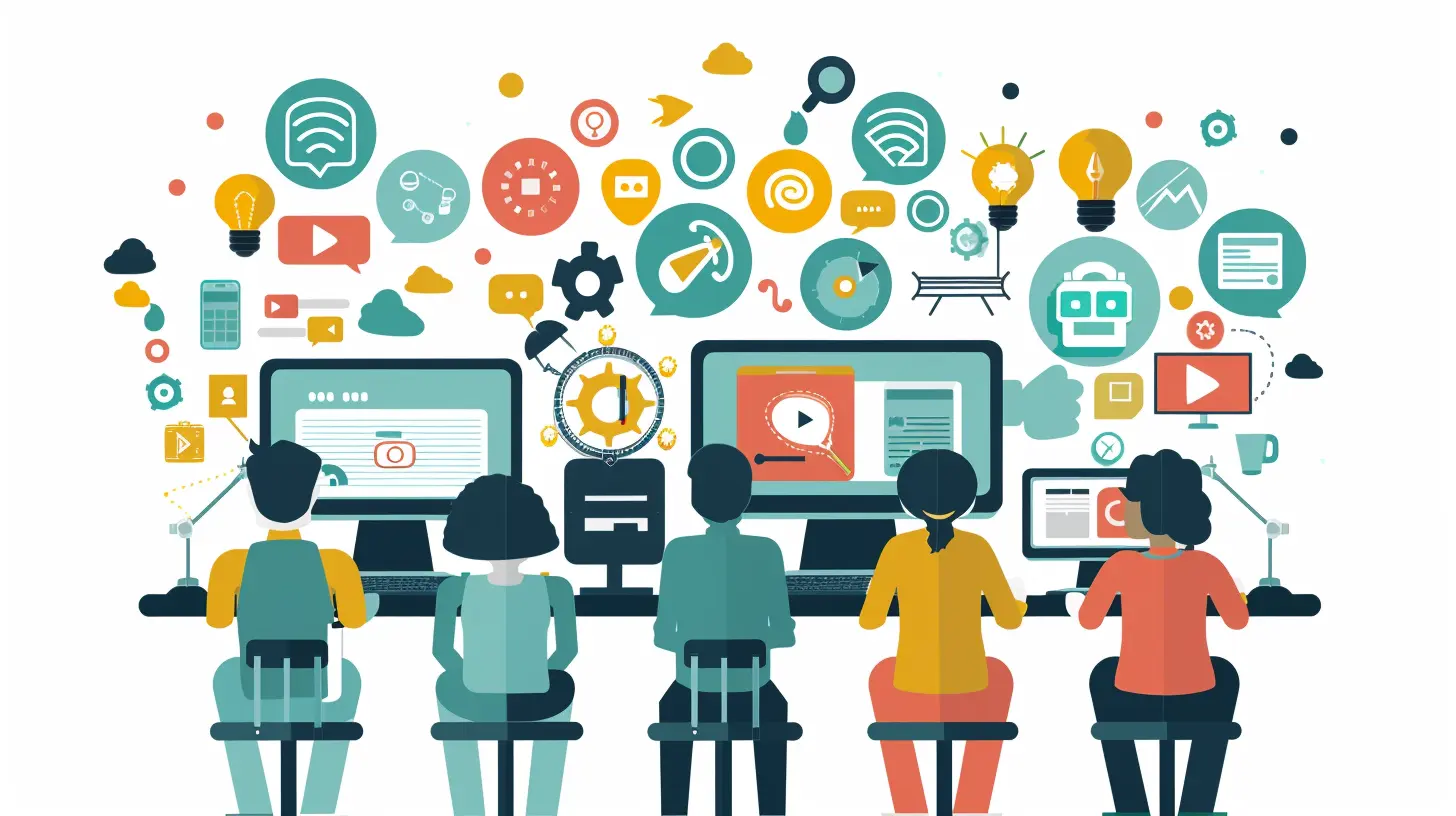Collaborative Learning Models in the Digital Age
2 August 2025
Education has come a long way, and with the rise of digital technology, the way we learn has completely transformed. Gone are the days of isolated study sessions with just textbooks and notes. Today, collaborative learning is at the forefront, enabling students to interact, engage, and grow together, no matter where they are in the world.
But what exactly is collaborative learning in the digital age? How does it work, and why does it matter? Let’s dive into the details.

What Is Collaborative Learning?
Simply put, collaborative learning is when students work together to achieve a common goal. Instead of learning in isolation, they exchange ideas, solve problems as a team, and build knowledge collectively.In the digital era, this method has evolved beyond the traditional classroom setup. Thanks to online tools and platforms, students can now collaborate through video calls, discussion forums, and cloud-based documents—anytime, anywhere.

Why Is Collaborative Learning Important?
Education isn’t just about memorizing facts—it's about understanding, questioning, and applying knowledge. Collaborative learning fosters:- Critical thinking – When students discuss and debate, they develop deeper insights.
- Communication skills – Learning to express ideas clearly is crucial in today’s world.
- Problem-solving abilities – Group work helps students approach challenges from different angles.
- Increased engagement – Interactive learning keeps students motivated.
- Social and emotional growth – Working with peers builds empathy and teamwork.
Now that we understand the benefits, let’s explore some key collaborative learning models that thrive in the digital environment.

Top Collaborative Learning Models in the Digital Age
1. Peer-to-Peer Learning
Ever learned something better by teaching it to a friend? That’s the essence of peer-to-peer learning. This method encourages students to share knowledge, clarify doubts, and challenge each other’s thinking.In a digital setting, platforms like Google Docs, Zoom, and Slack make it easy for students to connect, brainstorm, and study together. Online discussion boards and peer review systems also promote constructive feedback.
2. Project-Based Learning (PBL)
Project-based learning is all about hands-on experience. Instead of just reading about a topic, students actively work on real-world problems. They research, collaborate, and present their findings.With digital tools like Trello, Asana, and Microsoft Teams, students can manage group projects efficiently. They can assign tasks, track progress, and ensure everyone stays on the same page.
3. Flipped Classroom Model
The flipped classroom method turns traditional learning upside down. Instead of learning in class and doing homework at home, students study materials beforehand (videos, e-books, articles) and use classroom time for discussions and problem-solving.With platforms like Khan Academy, Coursera, and Edmodo, educators can provide pre-recorded lectures and ensure classroom time is used for deeper learning.
4. Virtual Study Groups
Remember study groups at the library? Those have now gone digital. Students form virtual study groups using tools like Discord, WhatsApp, or Zoom to review lessons, discuss tests, or work on assignments.The beauty of virtual study groups is accessibility. Whether in different time zones or dealing with busy schedules, students can still collaborate effectively.
5. Collaborative Online Research
Gone are the days when students conducted research individually and presented it as a solo effort. With digital collaboration, students can work together on research projects using shared online resources.Google Scholar, Mendeley, and Zotero help students gather and organize research collectively, ensuring every team member contributes meaningfully.
6. Role-Playing and Simulation-Based Learning
Imagine stepping into a real-world scenario where you must solve a business crisis or diagnose a medical condition—this is simulation-based learning. Role-playing engages students, making learning more immersive and practical.Tools like Second Life, Kahoot!, and Socrative allow students to interact in a virtual environment and test their knowledge hands-on.
7. Gamification and Collaborative Learning
Who said learning can’t be fun? Gamification brings an interactive spin to education. By incorporating game elements like leaderboards, challenges, and team competitions, students stay engaged and motivated.Platforms like Quizizz, Classcraft, and Duolingo foster teamwork while making learning enjoyable.

Challenges of Collaborative Learning in the Digital Space
While digital collaborative learning has numerous benefits, it’s not without challenges. Some common obstacles include:- Technology barriers – Not all students have equal access to devices or high-speed internet.
- Time zone differences – Coordination can be tricky for global learners.
- Distractions – Digital platforms can be overwhelming with notifications and interruptions.
- Unequal participation – Some students may contribute more while others remain passive.
To overcome these challenges, educators and students need clear guidelines, effective communication, and the right digital tools.
Best Practices for Effective Digital Collaborative Learning
For collaborative learning to be successful in a digital environment, consider these tips:1. Set clear objectives – Ensure everyone understands the goals and expectations.
2. Use the right tools – Pick collaboration-friendly platforms like Google Workspace, Notion, or Padlet.
3. Encourage active participation – Create opportunities for every student to contribute.
4. Foster a positive learning environment – Respect different viewpoints and encourage constructive discussions.
5. Monitor and provide feedback – Regular check-ins keep projects on track and boost engagement.
The Future of Collaborative Learning
With advancements in artificial intelligence, virtual reality, and interactive learning platforms, the future of collaborative learning looks promising. Imagine students working on science experiments in a virtual lab or brainstorming in a 3D digital space—it’s not science fiction anymore!As technology continues to evolve, collaborative learning will become even more interactive, inclusive, and engaging. The key is to embrace these changes while ensuring that education remains meaningful and student-centered.
Final Thoughts
Collaborative learning in the digital age is not just a trend; it’s a necessity. By working together, students develop essential skills that prepare them for the real world. Whether through online study groups, project-based learning, or gamification, digital tools have made collaboration easier than ever.So, if you’re still studying alone, it might be time to team up. After all, learning is better when it’s shared!
all images in this post were generated using AI tools
Category:
Innovation In EducationAuthor:

Olivia Chapman
Discussion
rate this article
1 comments
Greyson Whitaker
Collaborative learning in the digital age fosters critical thinking and creativity, empowering students to engage deeply, share diverse perspectives, and build essential communication skills.
August 12, 2025 at 3:32 AM

Olivia Chapman
Thank you for your insightful comment! I completely agree that collaborative learning in the digital age enhances critical thinking and creativity, while also enriching communication skills through diverse interactions.


